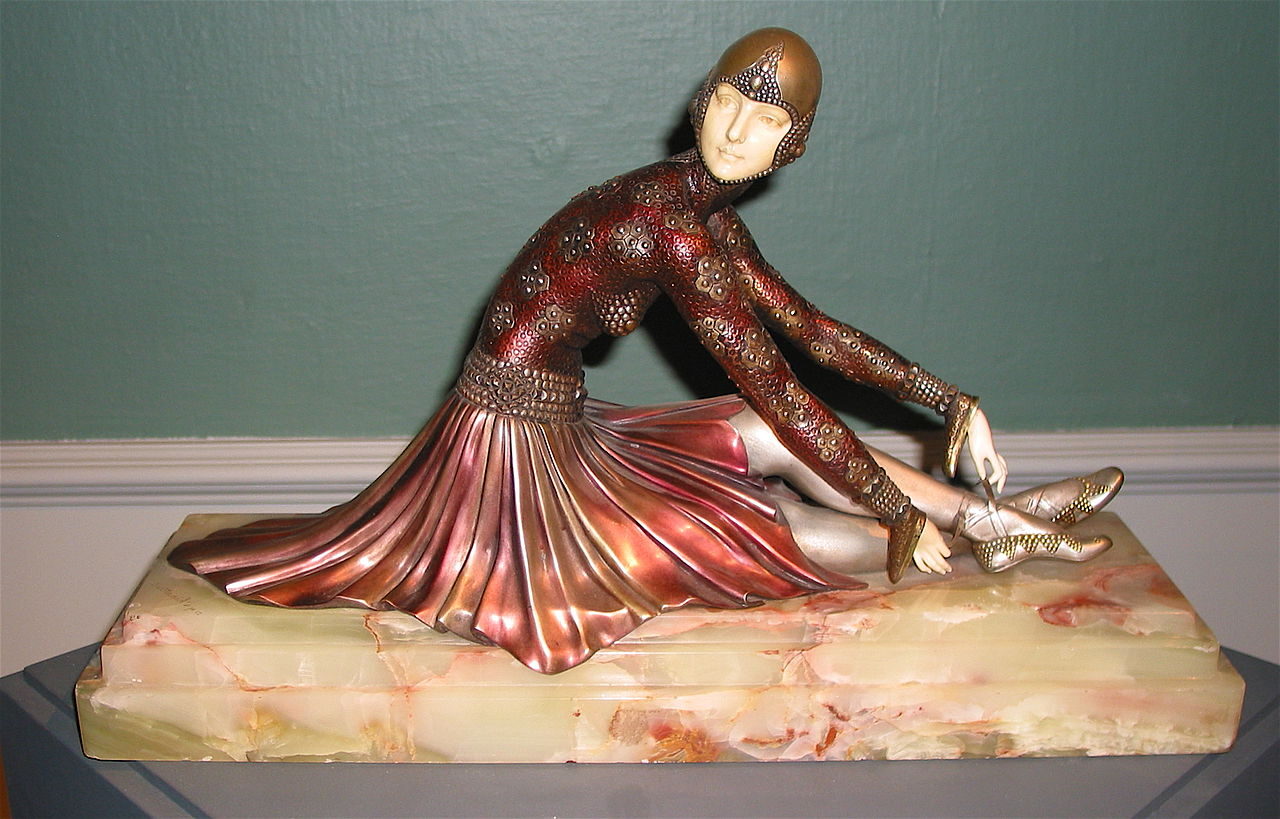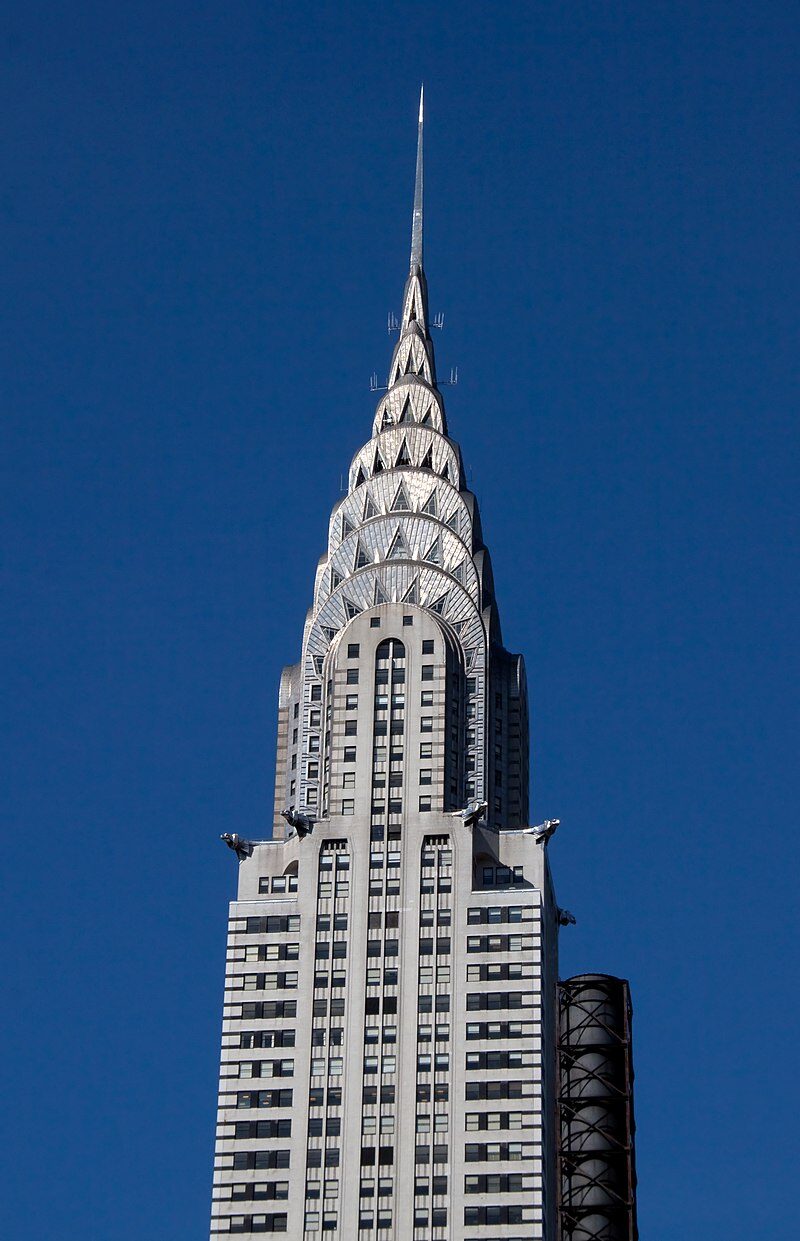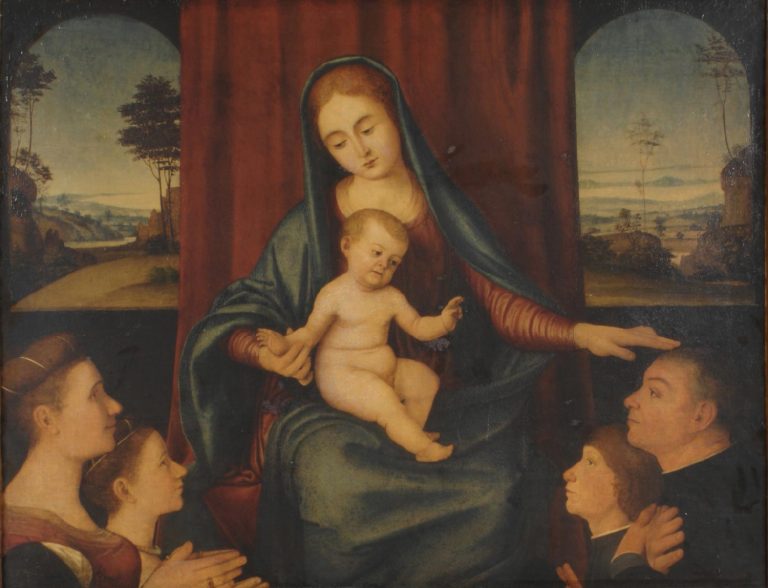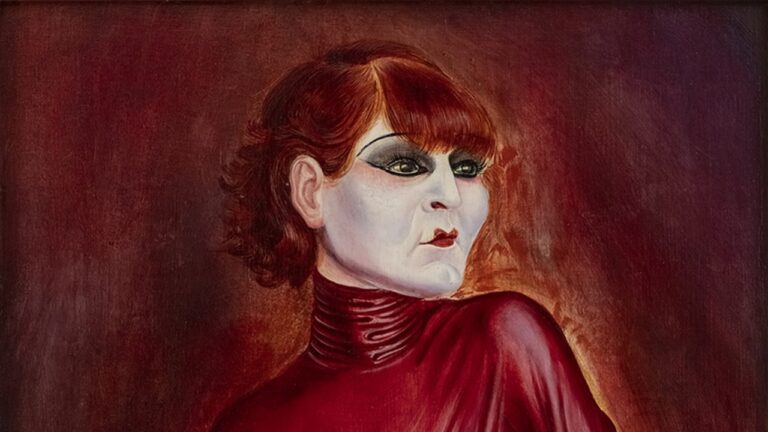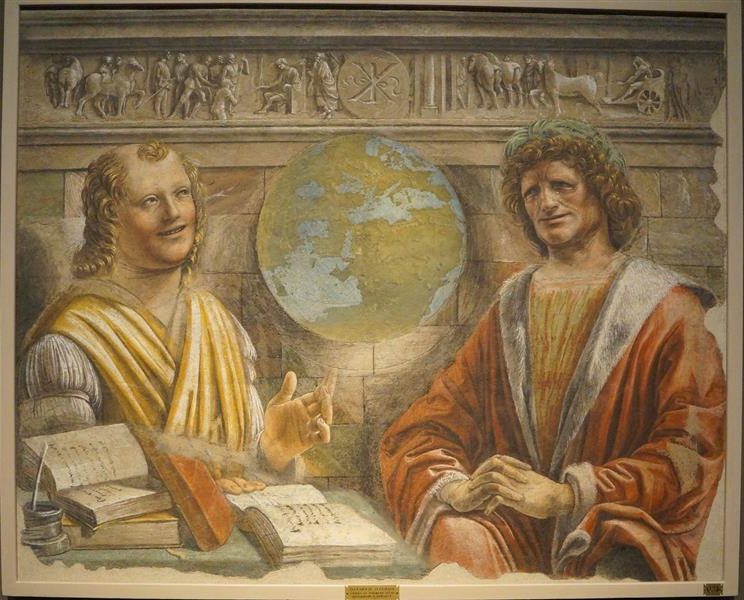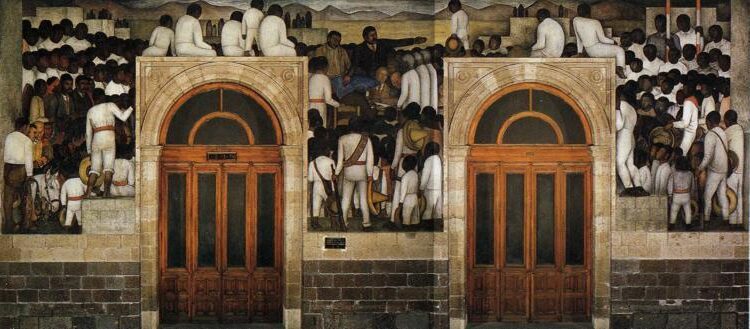Art Deco Artists: Pioneers of Elegance and Modernism
Origins and Characteristics of Art Deco
Art Deco emerged in the early 20th century. It flourished from the 1920s to the 1930s. It combined modernity with luxury through bold geometric shapes and elegant, decorative designs.
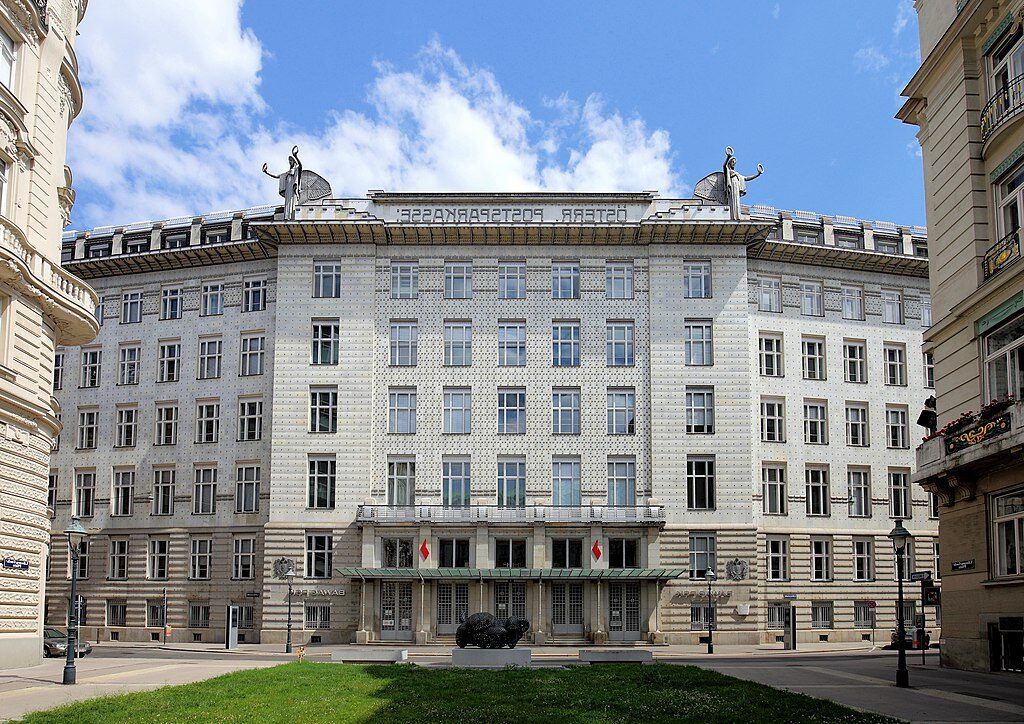
This era displayed a shift from previous art movements, like Art Nouveau, and captured the glamour of the Roaring Twenties.
The Rise of Art Deco
Art Deco originated in the 1920s, gaining prominence at the Exposition Internationale des Arts Décoratifs et Industriels Modernes held in Paris in 1925. This movement was influenced by various global cultures. African tribal art and ancient Greco-Roman architecture played a role in its unique style. The movement also embraced the industrial advancements of the time, reflecting a shift toward modernity and sophistication during the Roaring Twenties. It left a significant mark on architecture and design in both Europe and the United States.
Defining Features of Art Deco Style

Landscape with a Palace (1916) by Eugeniusz Zak
The Art Deco style is recognized for its bold geometric shapes, sleek lines, and elegant curves.
Key elements include:
- Use of luxurious materials
- High-quality craftsmanship
- Symmetry and streamlined forms
These characteristics set it apart from the flowing, organic lines of Art Nouveau. Bold colors and rich textures further emphasized its glamour. Admired for its sophistication, Art Deco incorporated influences from Cubism and Futurism, making it a distinct decorative style. Its focus on opulence and modern elegance defined the aesthetic tastes of the era.
Influential Art Deco Artists and Designers
Art Deco kindled a distinct blend of style and passion in the early 20th century. It showcased vibrant colors, geometric shapes, and luxurious materials. Notable artists and designers like Tamara de Lempicka and Romain de Tirtoff (Erté) left lasting marks on architecture, fashion, and more.
Tamara de Lempicka
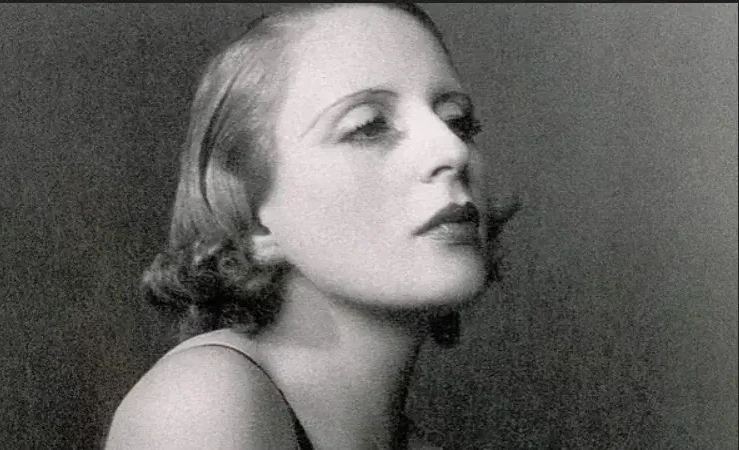
Photo of Tamara de Lempicka
Tamara de Lempicka was a Polish-born artist renowned for her bold and elegant portraits. Her work epitomized the glamor and sophistication of Art Deco. Known for the piece “Young Lady with Gloves,” she often painted high-profile socialites, capturing their style and confidence. Her use of strong lines and vivid colors epitomized Art Deco’s sleek aesthetics.


With her unique style, Lempicka influenced fashion and art movements beyond painting. Her evocative portrayals resonate with audiences, standing as a testament to the opulence and allure of the 1920s and 1930s. Her depictions of modern women conveyed independence and strength, marking her as a pioneer among female artists in the Art Deco scene.
Romain de Tirtoff (Erté)
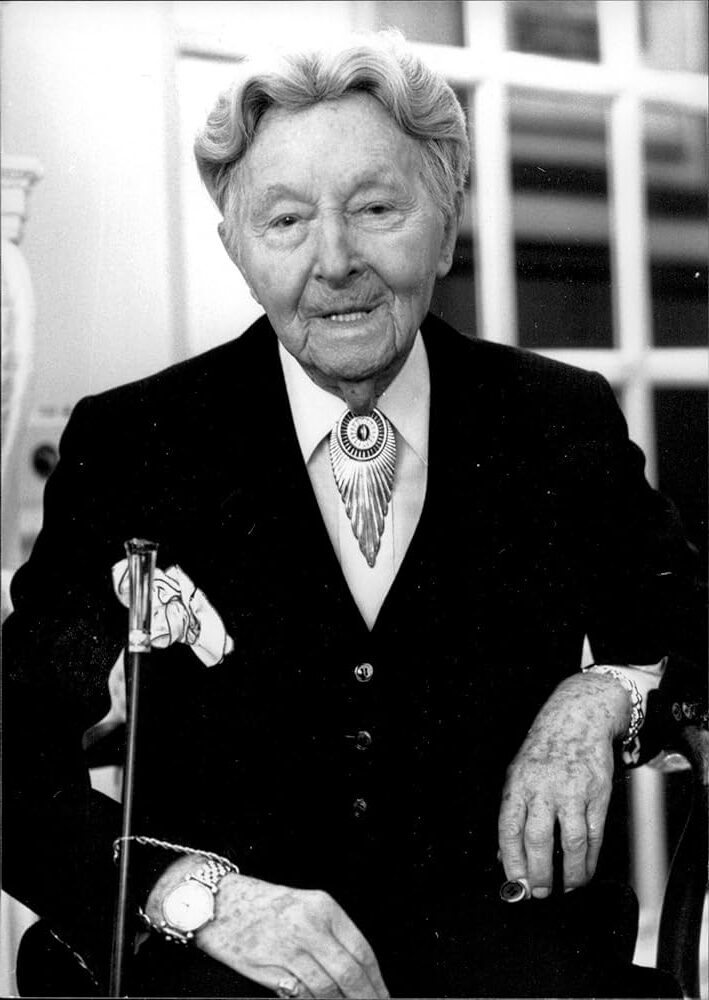

Romain de Tirtoff, best known by his pseudonym Erté, was a Russian-born artist and designer whose work encompassed fashion, stage sets, and film. His Art Deco designs featured luxurious materials and intricate patterns. Erté’s illustrations appeared in leading fashion magazines, setting trends with his iconic figures and dramatic flair.
Erté’s name became synonymous with elegance and fantasy. His influence stretched across genres, impacting theater productions and costume design with his inventive approach. By combining style and fantasy, Erté crafted a signature look that left a lasting impression on generations of designers. His contributions to Art Deco illustrate the symbiotic relationship between fashion and art during this period.
Jean Dunand

Jean Dunand alongside some of his paintings
Jean Dunand was a Swiss-French artist who excelled in metalwork and lacquerware, showcasing Art Deco’s decorative nature. He specialized in furniture and decorative items, creating pieces with exquisite craftsmanship. Dunand’s mastery of lacquer techniques gave birth to stunning vases and panels decorated in captivating geometric patterns.
His collaboration with other notable artists, like Émile-Jacques Ruhlmann, reflected Art Deco’s collaborative spirit. Dunand’s works were celebrated for their precise detailing and luxurious appeal. By integrating formality and functionality, he exemplified the essence of Art Deco design, leaving a legacy in both personal and public spaces.
Émile-Jacques Ruhlmann
Émile-Jacques Ruhlmann was a French designer internationally acclaimed for his luxury furniture and interior designs. His work encapsulated the elegance and craftsmanship of the Art Deco era. Known for using rare woods, exotic materials, and meticulous artistry, Ruhlmann’s furnishings are considered masterpieces.
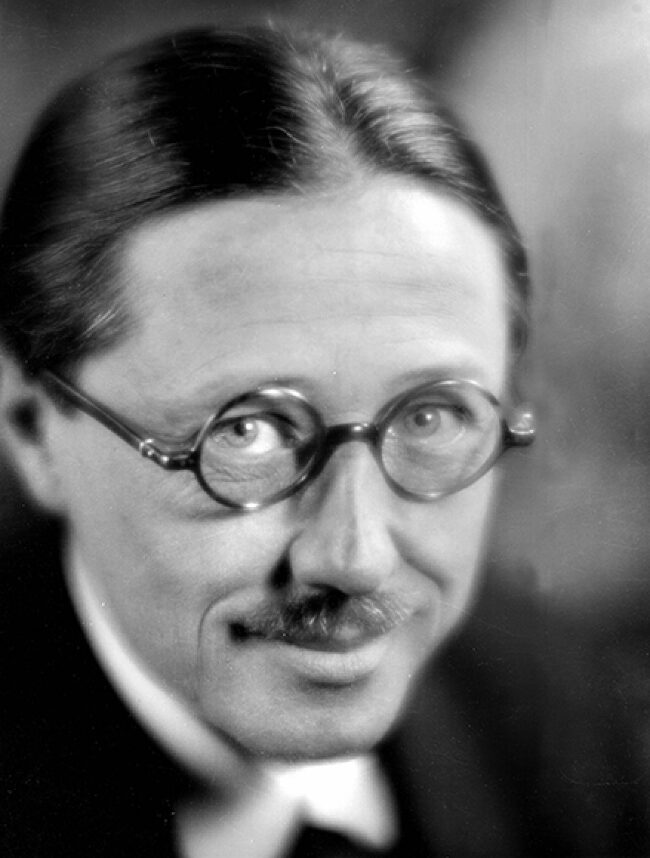
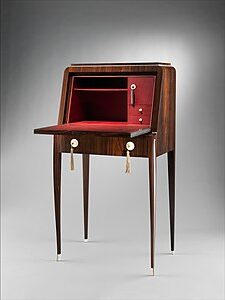
Ruhlmann had a reputation for high standards and attention to detail. His designs were frequently featured in prestigious exhibitions, cementing his status as a master of Art Deco. By blending traditional craftsmanship with modern aesthetics, Ruhlmann created timeless designs still revered in the world of interior design.
René Lalique
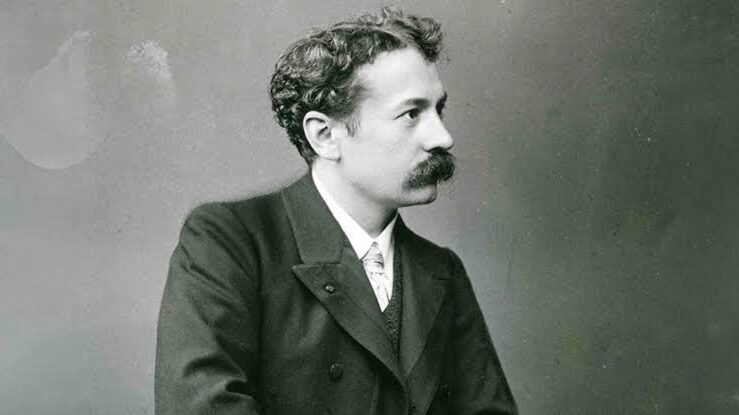
Photo of René Lalique
René Lalique was a celebrated French glass designer renowned for his intricate jewelry and distinctive glass art. He played a pivotal role in popularizing glass as an Art Deco material. Lalique’s creations ranged from exquisite perfume bottles to elaborate architectural glasswork.
With a keen eye for detail, Lalique pioneered innovations in glass design, transforming everyday objects into pieces of art. His ability to merge translucency with texture resulted in captivating visuals that left viewers in awe. Lalique’s legacy as a key Art Deco figure is sustained by his innovative techniques and timeless beauty reflected in his creations.
Art Deco in Various Forms
Art Deco impacted many areas, from grand buildings to intricate sculptures. This style is recognized for its sleek lines, bold colors, and geometric shapes. Below are the key aspects of how Art Deco manifested in different forms.
Architecture and Monumental Works
Art Deco architecture is often seen in iconic buildings like the Chrysler Building and the Empire State Building. These structures showcase geometric designs, with sharp angles and stylized, decorative elements that emphasize verticality. Architect Lee Lawrie was notable for incorporating Art Deco motifs in monumental works.
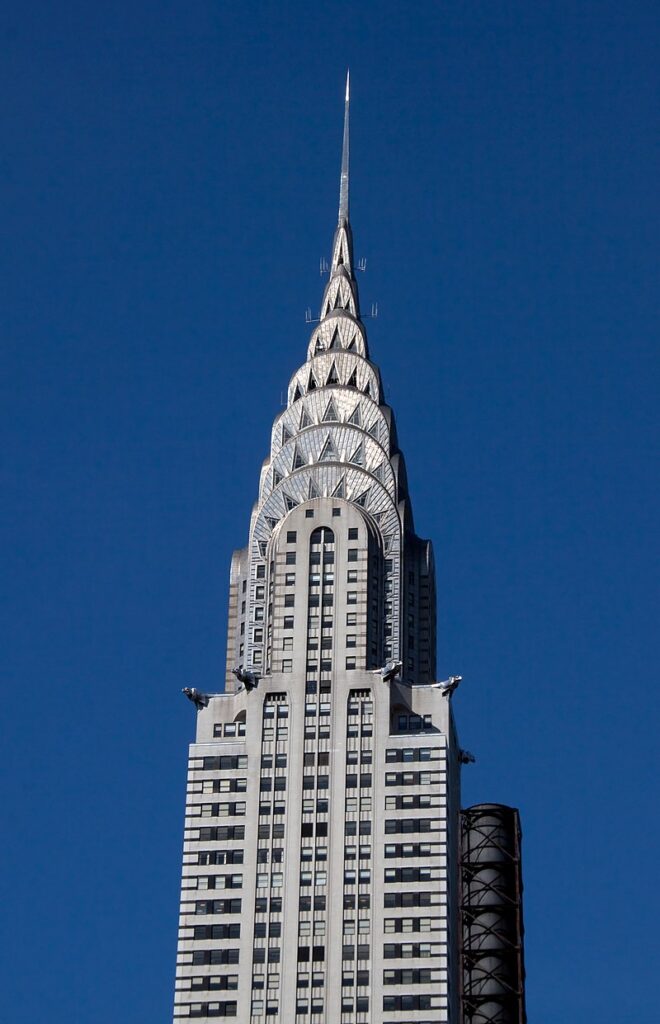

Art Deco architecture merged innovation with elegance, standing as symbols of modernity. This period favored the use of new materials like chrome and stainless steel, giving buildings their sleek, modern look. Techniques that played with light and shadow added to the dramatic presence of these architectural feats.
Art Deco Painting and Graphic Art
Art Deco painting often features bold colors and dynamic compositions. Posters from this era used striking contrasts to grab attention, a common technique in graphic art. Artworks celebrated speed, luxury, and technological progress, often portraying urban scenes and fashionable figures.
Painting in the Art Deco style was heavily inspired by movements like Cubism and Fauvism. Artists used streamlined forms and rich colors to convey energy and sophistication. Both commercial and fine art pieces from this time reflect a fascination with the future, using symmetry and geometry to produce harmonious visuals.
Sculpture and Decorative Arts
Sculpture in the Art Deco movement emphasized sleek, elongated forms and elegant poses. Demétre Chiparus was a key figure, known for his intricate bronze and ivory figures. Decorative arts in this period span porcelain, ceramics, and metalwork, showcasing craftsmanship.
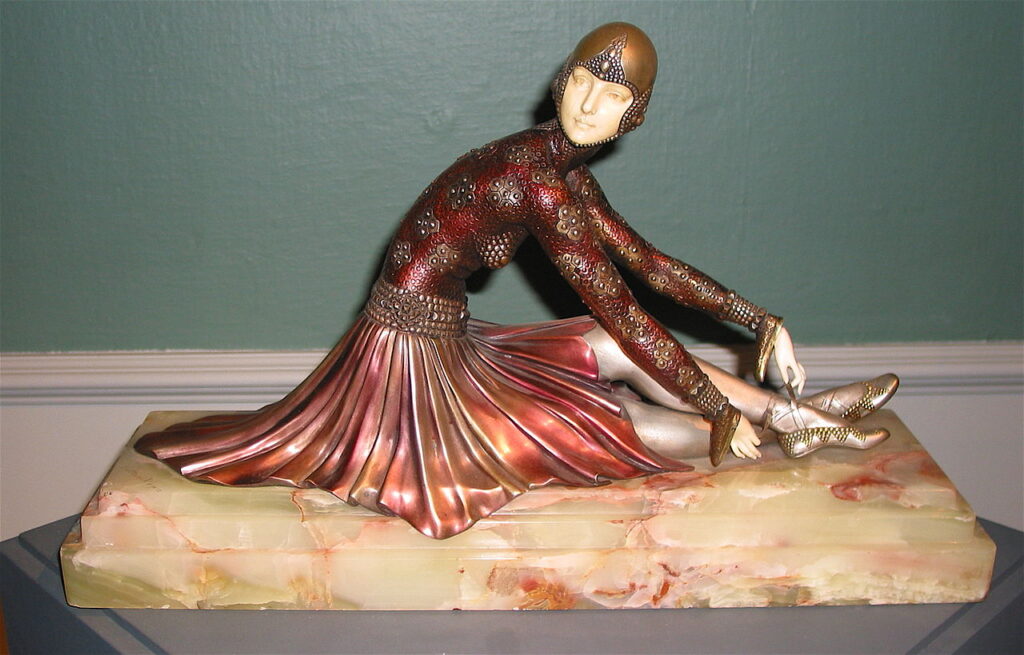
Tânără (Girl) (2003) by Demétre Chiparus
These artworks often had themes of athleticism and beauty, capturing a sense of modernity and grace. The use of luxurious materials like marble and onyx was common in sculptures. Decorative items also featured geometric patterns, reinforcing the style’s cohesive visual language throughout various mediums.
Interior Design and Furniture
Interior design in the Art Deco era focused on luxury and sophistication. Furniture designers created sleek and stylish pieces with rich materials such as exotic woods, leather, and chrome. The furniture was not just functional but served as a statement of taste and wealth.
Textiles and wallpapers bore vibrant, repeating patterns that matched the bold aesthetics of the period. Interiors were often accented with mirrors and glass, elements that enhanced the sense of space and light. This approach to design created environments of glamour and elegance, mirroring the artistic trends of the time.
Art Deco Influence on Fashion and Jewelry
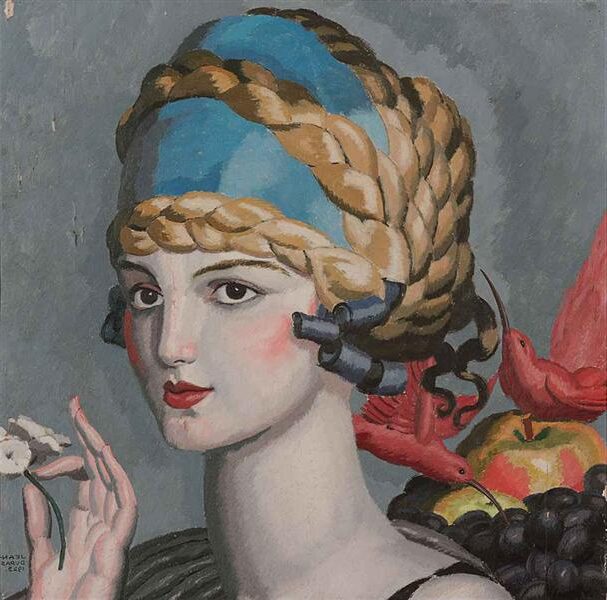
Pomone (Mlle Marguerite Grain) (1923) by Jean Dupas
Art Deco had a significant impact on both fashion and jewelry during its peak. Fashion saw a shift towards sleek lines and modern aesthetics, while jewelry embraced geometric patterns and luxurious materials.
The Fashion Revolution
Art Deco fashion was all about boldness and elegance. Fashion designers used geometric patterns and sleek lines to redefine clothing styles. Dresses featured straight cuts and shorter hemlines, reflecting a modern flair.
Costume design, especially in theatre and films, showcased these elements, influencing everyday trends. Notably, designers like Cassandre contributed with fashion illustrations that highlighted these styles.
In set design, Art Deco’s influence was undeniable, with its fusion of modern art and architecture. These elements seamlessly merged into fashion, creating a transformative era.
Exquisite Art Deco Jewelry
In the realm of jewelry, Art Deco brought forth luxury and innovation. Jewelry designers employed bold geometric shapes, using exotic materials like onyx, diamonds, and emeralds. These pieces were often statement items, crafted to captivate attention.

Ragtime (1953-1957) by Miriam Schapiro
Jewelry houses, including Victoire and Cartier, played pivotal roles in this movement. Their designs featured not only precious stones but also innovative materials, making each piece unique.
Art Deco jewelry mirrored the era’s artistic movements. It embodied a mix of traditional craftsmanship with newer, modernist approaches, maintaining a balance between luxury and practicality.
The Global and Historical Impact of Art Deco
Art Deco left a lasting mark far beyond its beginnings in France. This style embraced modern materials and new techniques, evolving alongside the industrial revolution. Its legacy remains visible through preservation efforts around the world.
Art Deco’s International Reach
Art Deco spread rapidly across continents in the early 20th century. Designers drew inspiration from diverse cultures, such as African, Asian, and Mesoamerican art. This international influence helped shape Art Deco into a global phenomenon.

Woman Grinding Maize (1924) by Diego Rivera
Major cities embraced Art Deco as an emblem of progress and modernity. Landmark buildings in New York, Paris, and London still showcase its impact today. Events like the 1925 International Exhibition of Modern Decorative and Industrial Arts in Paris played a crucial role in promoting these designs worldwide.
Art Deco and the Industrial Revolution
The rise of the industrial revolution played a significant role in the development of Art Deco. This era brought new materials like steel, glass, and concrete, which enabled bold architectural designs. The style emphasized geometric forms and modernity, reflecting the advancements of the time.
Through graphic art and portraits, Art Deco artists celebrated industrial progress. They captured themes like speed and technology, showcasing the optimism of the age. Industrial and decorative arts merged to create furniture, jewelry, and even glasswork, shaping how people experienced their surroundings.
Preservation of Art Deco Heritage
Preserving Art Deco heritage is crucial to maintaining its historical value. Many iconic buildings, such as the Chrysler Building in New York, have become symbols of this vibrant style. Restoration efforts focus on maintaining original materials and techniques to keep the authentic feel intact.
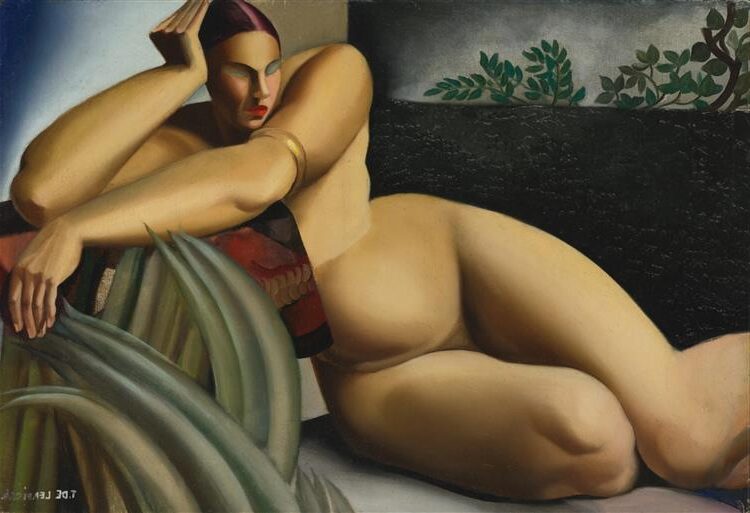
Nude on a Terrace (1925) by Tamara de Lempicka
Local communities and organizations often collaborate to protect Art Deco landmarks. Educational programs and exhibitions highlight the significance of Art Deco ideals. These efforts ensure that future generations can appreciate the artistic innovations that marked a pivotal era in design history.
Frequently Asked Questions
Art Deco was a vibrant and luxurious art movement, blending modernist trends with rich materials and bold designs. Originating in France, it featured prominent artists and had a distinct style from other art movements like Art Nouveau.
What are some notable characteristics of Art Deco paintings?
Art Deco paintings are known for bold geometric patterns and dynamic forms. They often used vibrant colors and incorporated luxurious materials like gold and silver. The focus was on achieving a sense of elegance and modernity.
Who were some significant Art Deco artists during the 1920s?
The 1920s saw the rise of famous Art Deco artists like Tamara de Lempicka, whose portraits captured the era’s glamour. Other influential figures included Jean Dupas and Erté, both of whom contributed greatly to the style’s popularity.
How did Art Deco differ from Art Nouveau in terms of artistic style?
Art Deco is characterized by its emphasis on geometric shapes and luxurious materials, while Art Nouveau focuses on natural forms and flowing lines. Art Deco employed more symmetry and bold, vibrant colors, unlike the organic and intricate designs of Art Nouveau.
Can you name a few influential female artists in the Art Deco movement?
Tamara de Lempicka stands out as a prominent female artist in the Art Deco movement. Her work depicted the elegance and sensuality of the era. Other influential women included Sonia Delaunay, who was known for her innovative use of color and abstraction.
Which artists are considered pioneers in the field of Art Deco graphic design?
Erte, also known as Romain de Tirtoff, was a pioneer in Art Deco graphic design, famous for his stylish illustrations and theatrical sets. A.M. Cassandre was another key figure, recognized for his iconic posters and bold typography.
What contributions did Art Deco artists make to the modern art movement?
Art Deco artists brought a sense of modernity and opulence to the art world. They bridged traditional craftsmanship with industrial design. Their influence reached various fields like architecture, fashion, and modern graphic design. Their work highlighted the possibilities of combining form and function.


